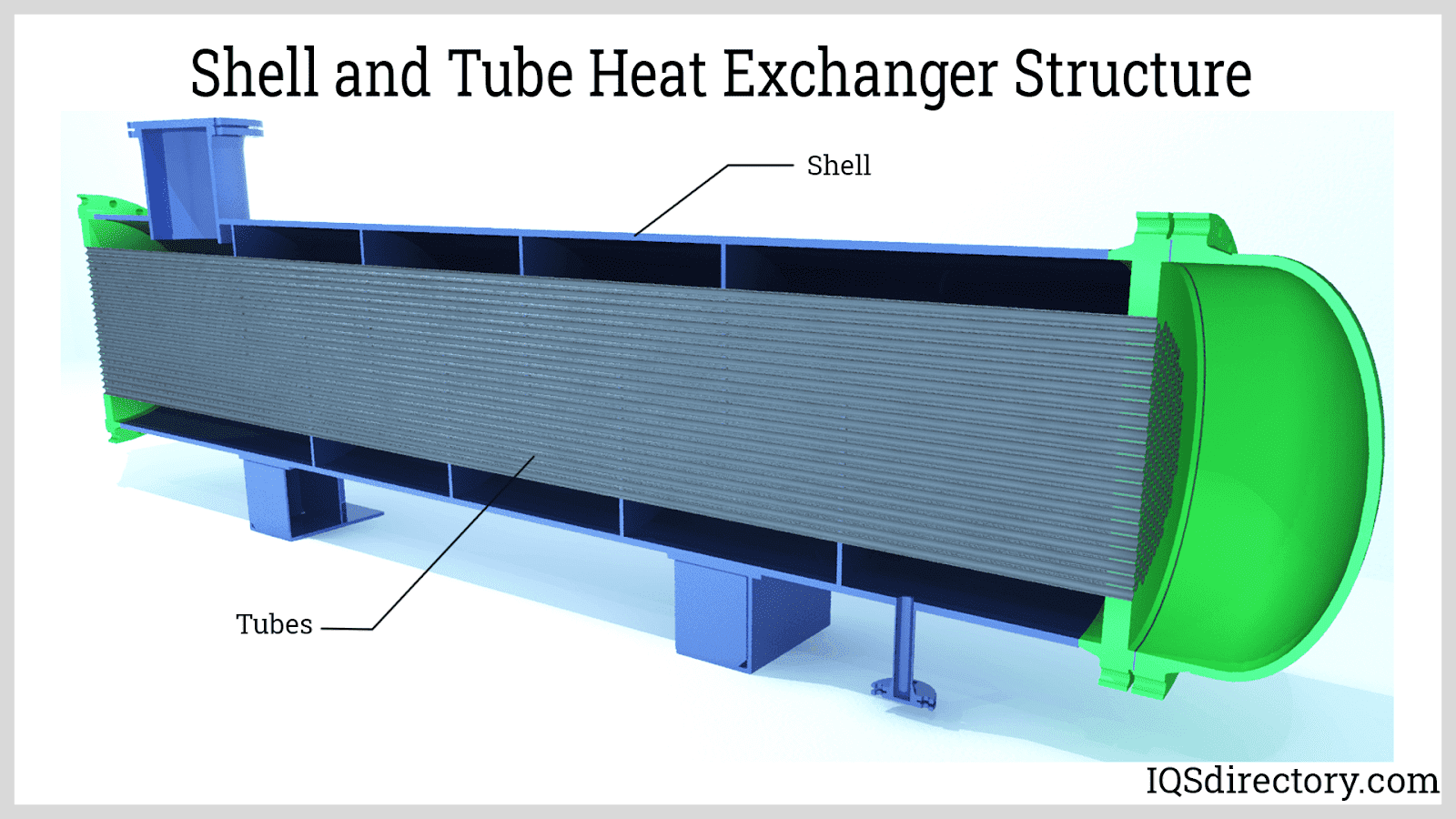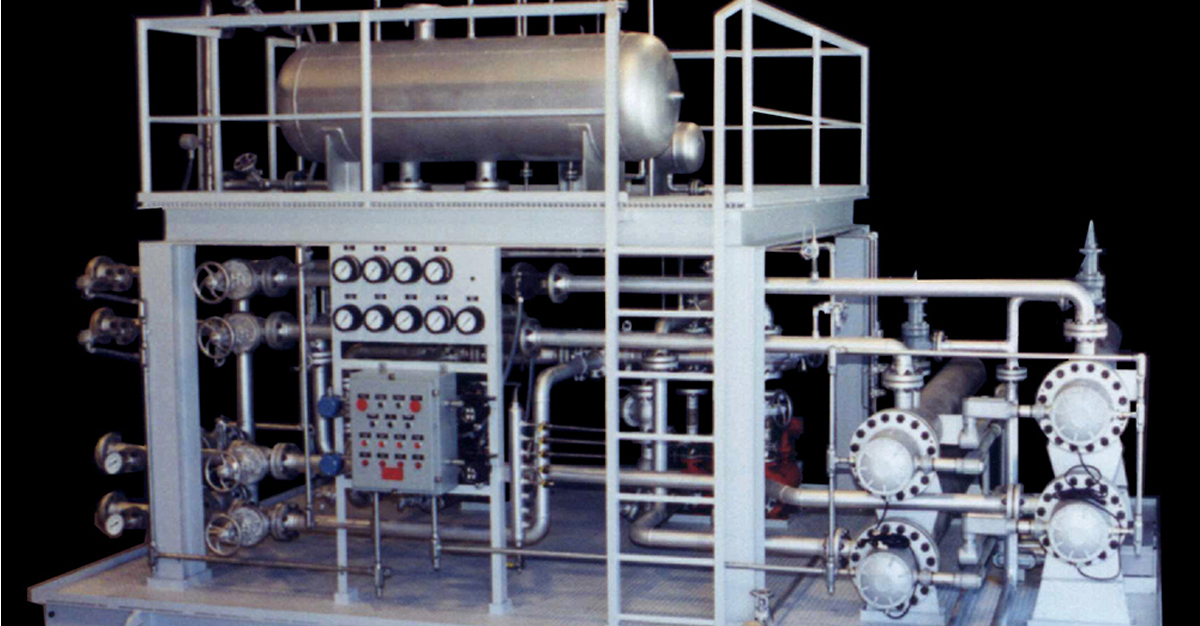A Practical Installation Guide for DVS Heat Transfer Systems in Smart Manufacturing
The Role of Heat Transfer Equipments in Sustainable Energy Solutions for the Future
Heat transfer systems are necessary in the quest for sustainable power options. They optimize thermal energy administration, improving the performance of sustainable innovations. By employing mechanisms like radiation, transmission, and convection, these systems lessen power losses. Their duty in solar thermal and geothermal applications is especially significant. As developments arise, the capacity for additional advancements increases vital questions about future power strategies. What developments will form the landscape of sustainable power?
Recognizing Heat Transfer Solutions

The Importance of Thermal Energy Management
Efficient thermal energy monitoring is necessary for taking full advantage of energy performance and reducing waste in numerous systems. By regulating temperature level and optimizing Heat transfer procedures, organizations can significantly minimize power intake and operational prices. Efficient monitoring entails the application of sophisticated innovations and methods that keep an eye on and manage thermal conditions within systems, making certain that energy resources are utilized effectively. Furthermore, appropriate thermal power management adds to reducing greenhouse gas discharges, lining up with worldwide sustainability objectives. It additionally improves system reliability and efficiency, bring about boosted item quality and longer tools life expectancy. Ultimately, focusing on thermal energy monitoring is a vital step towards developing extra lasting energy solutions and fostering a liable strategy to energy consumption in industrial and domestic contexts.
Applications of Heat Transfer in Renewable Energy
While numerous renewable resource sources guarantee sustainability, the reliable application of Heat transfer plays a necessary duty in their performance. In wind power systems, Heat transfer is made use of for wind turbine part cooling, enhancing efficiency and durability. Geothermal energy counts on effective Heat exchange between the earth's subsurface and the liquid distributing in the system, making the most of power removal. Biomass power processes likewise benefit from Heat transfer, as it helps in transforming natural products into functional fuel via pyrolysis and gasification. Additionally, in hydropower, preserving excellent temperatures in reservoirs can boost power outcome. Each of these applications shows the vital relevance of Heat transfer systems in boosting renewable resource innovations, eventually adding to a much more lasting power future.
Enhancing Solar Thermal Power Effectiveness
As solar thermal power systems proceed to advance, enhancing their performance has actually come to be essential for making the most of power output. Breakthroughs in Heat transfer innovations, such as improved thermal storage space products and cutting-edge Heat exchangers, play a substantial function in enhancing performance. By utilizing sophisticated products that have superior thermal conductivity, systems can transfer and record Heat better. Additionally, integrating radar that comply with the sun's course assurances that collection agencies obtain optimal solar direct exposure throughout the day. Making use of nanotechnology in solar absorbers can better increase energy absorption rates. Furthermore, incorporating automated control systems aids regulate temperatures and take care of energy circulation successfully, resulting in decreased losses and enhanced overall system effectiveness. These enhancements lead the way for more sustainable solar thermal energy services in the future.
Geothermal Home Heating: A Lasting Option
Geothermal heating offers a viable option for sustainable energy, providing considerable environmental advantages via minimized greenhouse gas emissions. Its performance and cost-effectiveness make it an appealing choice to conventional heating unit. Obstacles related to execution should be resolved to optimize its possible effect.
Ecological Benefits of Geothermal
Typical heating approaches contribute substantially to greenhouse gas exhausts, geothermal home heating offers a compelling choice that minimizes environmental effect. By harnessing the Earth's inner Heat, geothermal systems utilize a renewable resource source, significantly reducing reliance on nonrenewable fuel sources. This method generates minimal carbon exhausts, making it a cleaner alternative for residential and business heating. Additionally, geothermal systems promote power effectiveness, as they require much less energy compared to standard heating unit. DVS Heat Transfer Systems. The utilization of geothermal energy additionally aids in lowering air pollution, enhancing regional air top quality and public health and wellness. As a sustainable service, geothermal home heating supports climate modification reduction efforts, placing itself as an important component in the change towards a greener future
Performance and Cost-Effectiveness
How does geothermal home heating measure up in terms of performance and cost-effectiveness compared to standard furnace? Geothermal heating shows remarkable efficiency, typically accomplishing a coefficient of efficiency (COP) of 3 to 5, indicating it generates three to five units of Heat for every single unit of electrical energy taken in. This efficiency equates into lower operating expense, specifically in regions with stable geothermal sources. Preliminary installation expenses can be greater than standard systems; nonetheless, lasting cost savings on power expenses and decreased upkeep costs can offset these upfront financial investments. Furthermore, many governments incentivize geothermal systems with discounts and tax debts, improving their cost-effectiveness. Overall, geothermal heating becomes a sustainable and financially practical alternative to more traditional heating remedies.
Implementation Challenges and Solutions
Numerous obstacles can restrain the widespread implementation of geothermal heater, in spite of their clear advantages as a sustainable energy service. High initial setup prices usually hinder property owners and investors, making financing a significant barrier. Additionally, the geographical limitations of appropriate geothermal websites limit ease of access in specific areas. Regional regulations and permitting procedures can additionally complicate job development, bring about hold-ups. Public awareness and understanding of geothermal systems remain low, hindering approval. To attend to these difficulties, targeted education projects can enhance open secret, while government incentives might minimize monetary concerns. Collaborating with regional authorities to enhance policies may facilitate smoother project authorizations, inevitably advertising the fostering of geothermal heating as a feasible, sustainable power choice.
Developments in Heat Transfer Technologies
Technologies in Heat transfer modern technologies play a crucial duty in boosting energy performance and sustainability. Advanced Heat exchangers and phase adjustment products are at the leading edge of these growths, offering significant improvements in thermal administration. These technologies not just maximize power usage however additionally add to reducing ecological useful content effect in numerous applications.
Advanced Heat Exchangers
Advanced Heat exchangers play a vital duty in enhancing power effectiveness throughout numerous applications in sustainable energy services. These gadgets help with the transfer discover here of Heat in between 2 or more fluids, markedly minimizing power intake in procedures such as commercial home heating, cooling, and power generation. Developments in products and style, such as making use of nanofluids and small configurations, have actually resulted in improved thermal efficiency and minimized dimension requirements. In addition, improvements in digital monitoring and control systems permit enhanced operation, further increasing efficiency. By reducing waste Heat and making best use of energy healing, advanced Heat exchangers add to lower carbon footprints and support the change towards environmentally friendly modern technologies. Their proceeded advancement is crucial for accomplishing global power sustainability goals.
Phase Change Materials
The combination of phase adjustment products (PCMs) into Heat transfer innovations stands for a significant development in power administration and efficiency. PCMs soak up and release thermal power during their phase modifications, enabling reliable temperature law in building products and energy systems. By saving excess Heat throughout peak durations and launching it when demand boosts, PCMs contribute to pack moving and power conservation - DVS Heat Transfer Systems. This ability boosts the performance of sustainable power systems, especially in solar thermal applications. Furthermore, PCMs can improve the thermal convenience of interior atmospheres, decreasing dependence on traditional heating and cooling techniques. As developments in PCM solutions remain to arise, their role in sustainable energy remedies is poised to grow, providing click over here now appealing opportunities for future research and application

Future Potential Customers for Heat Transfer in Sustainable Energy
As the demand for sustainable energy remedies remains to climb, the duty of Heat transfer systems is ending up being increasingly crucial in shaping future technologies. Advancements in materials and designs are anticipated to boost efficiency in Heat transfer, decreasing energy losses in different applications. The combination of sophisticated thermal storage space systems, such as stage change materials and thermochemical storage space, will allow much better management of energy resources. Research study right into nanofluids and biomimetic Heat exchangers may additionally maximize thermal efficiency. Moreover, the fostering of clever modern technologies will certainly enable real-time tracking and flexible control of Heat transfer procedures. These improvements are positioned to considerably add to the overall efficiency and sustainability of power systems, paving the method for an extra energy-efficient future.
Often Asked Questions
Exactly How Can Individuals Implement Heat Transfer Equipment in your home?

Individuals can implement Heat transfer systems in the house by installing energy-efficient appliances, using radiant heating, and maximizing insulation. These actions improve power effectiveness, reduce costs, and promote sustainable practices in residential settings.

What Are the Prices Related To Setting Up Heat Transfer Systems?
The prices connected with installing Heat transfer systems vary extensively, usually including equipment, installation labor, and maintenance. Elements such as system type, home size, and regional regulations considerably affect the general expense involved.
Exist Federal Government Incentives for Heat Transfer System Installations?
Government rewards for Heat transfer system installments differ by region and can include tax obligation credit scores, gives, and rebates. These financial advantages aim to motivate fostering, ultimately advertising energy performance and reducing environmental effect within neighborhoods.
How Do Heat Transfer Solutions Effect Power Bills?
Heat transfer systems especially affect energy costs by maximizing energy efficiency. By improving the transfer of Heat, these systems reduce power consumption, causing reduced energy expenses and producing an extra sustainable approach to energy monitoring.
What Maintenance Is Needed for Heat Transfer Systems?
Upkeep for Heat transfer systems includes regular examinations, cleaning of elements, checking fluid degrees, making certain appropriate insulation, and changing used parts. These tasks aid maintain effectiveness, avoid malfunctions, and lengthen the system's operational lifespan.
These systems promote the movement of thermal energy from one medium to another, enabling the transfer of Heat for air conditioning, power, or heating generation functions. Geothermal power counts on efficient Heat exchange between the planet's subsurface and the fluid distributing in the system, optimizing power removal. In addition, geothermal systems advertise power effectiveness, as they call for much less power contrasted to traditional home heating systems. Advanced Heat exchangers play an important role in improving energy effectiveness across various applications in sustainable energy solutions. Heat transfer systems notably affect power costs by maximizing power effectiveness.